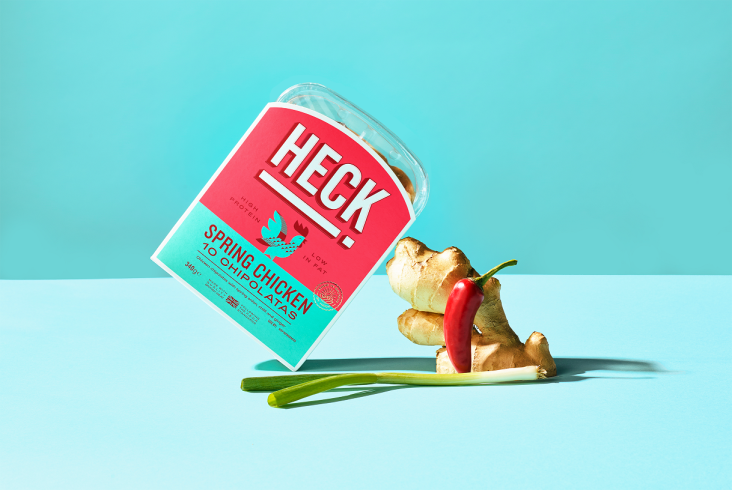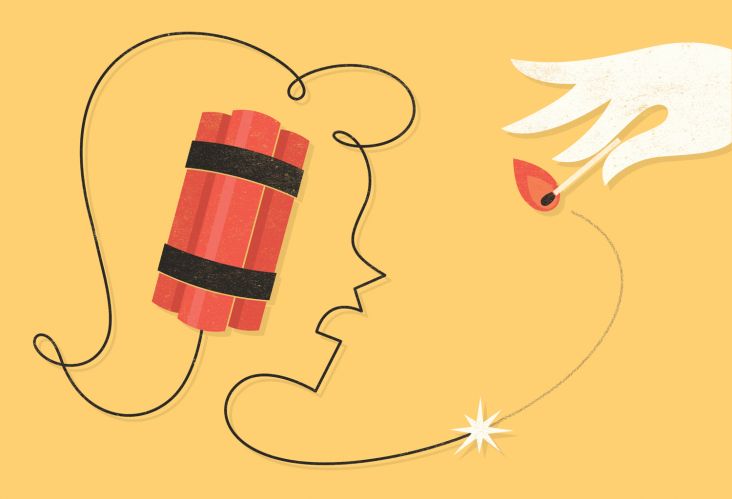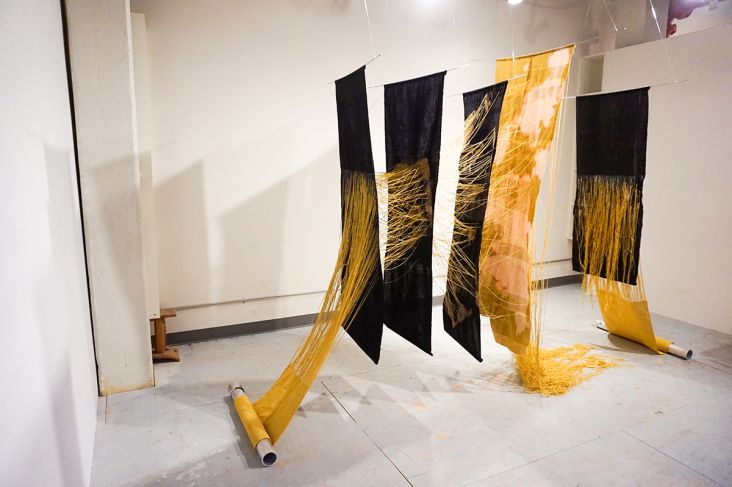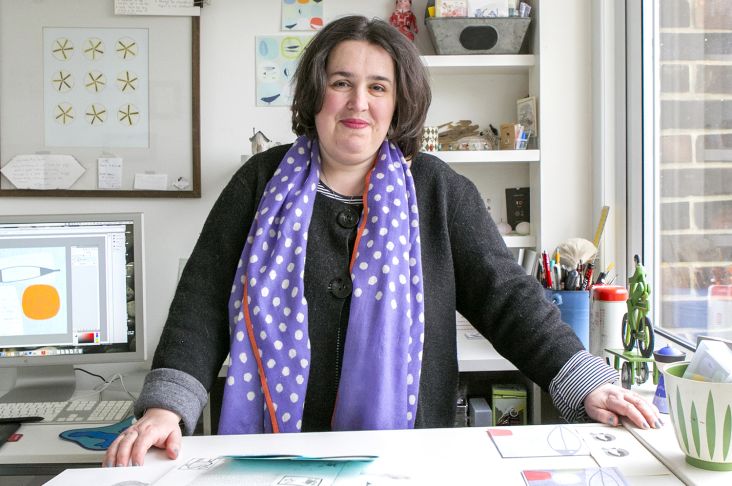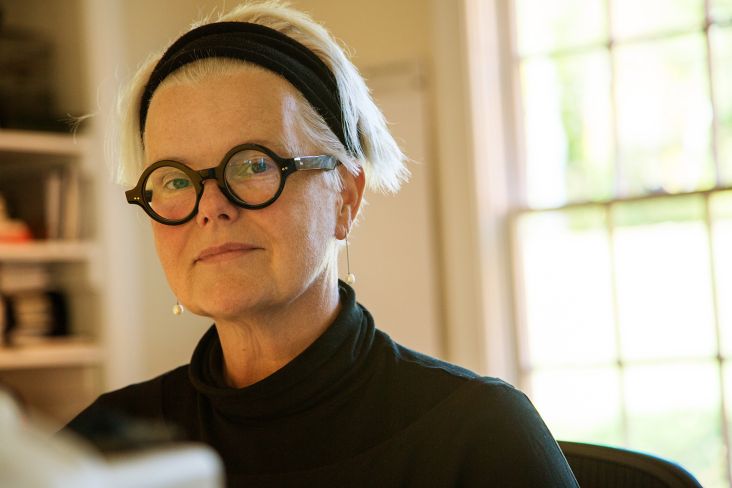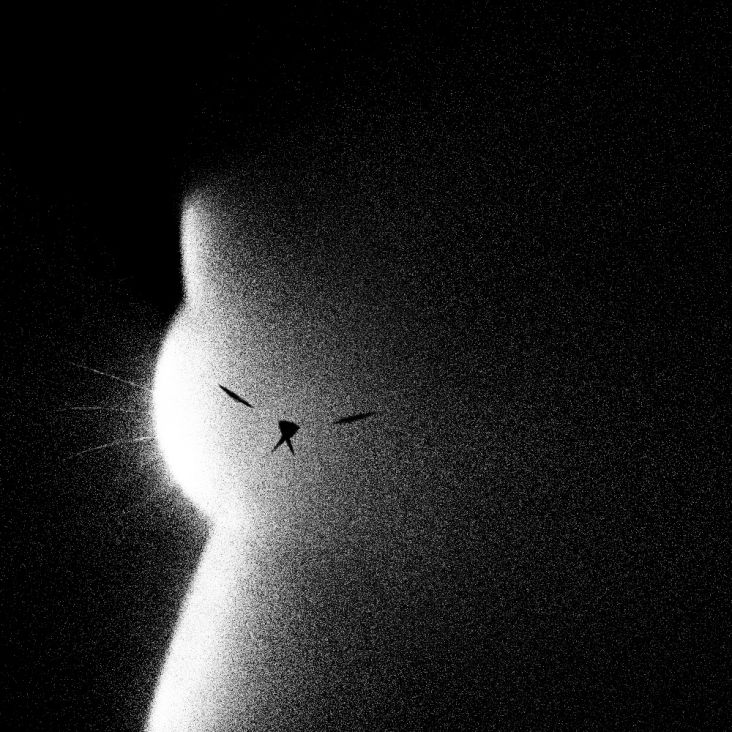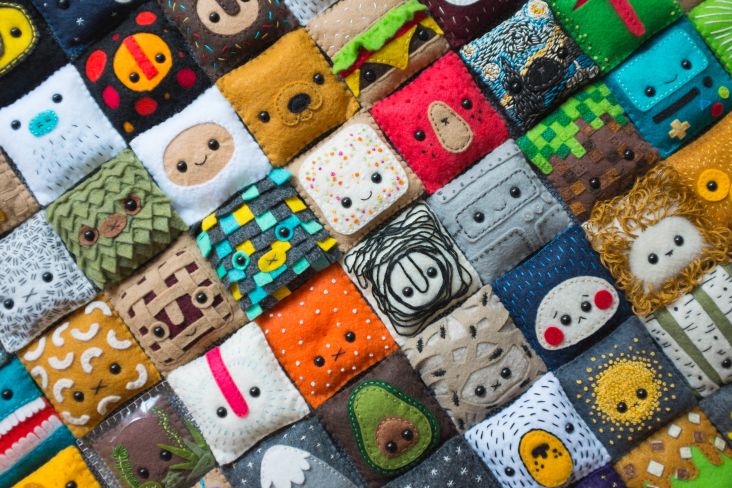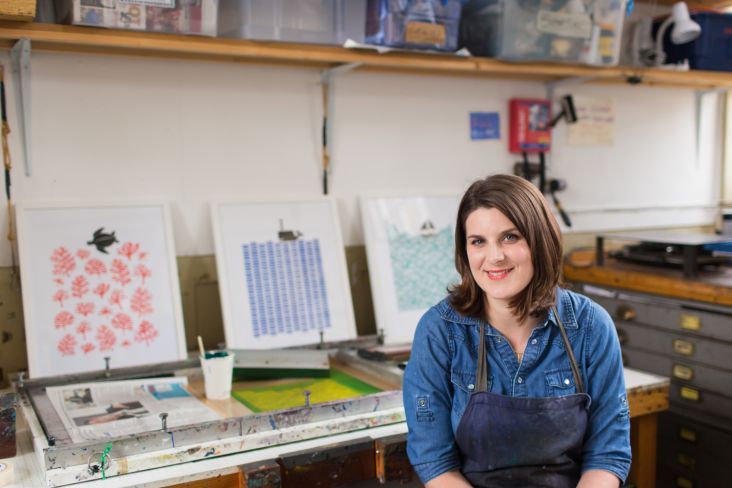Rob and Ruth Watson of Raw on downsizing a design studio, freedom & breaking the mould
If you talk about bravery when it comes to running a business, you'd probably assume that it only lies in growing a large team and taking lots of risks. You might not consider how scary and life-changing it can be for someone who seemingly has it all, but has decided to deliberately downsize their agency to enjoy a different type of working.
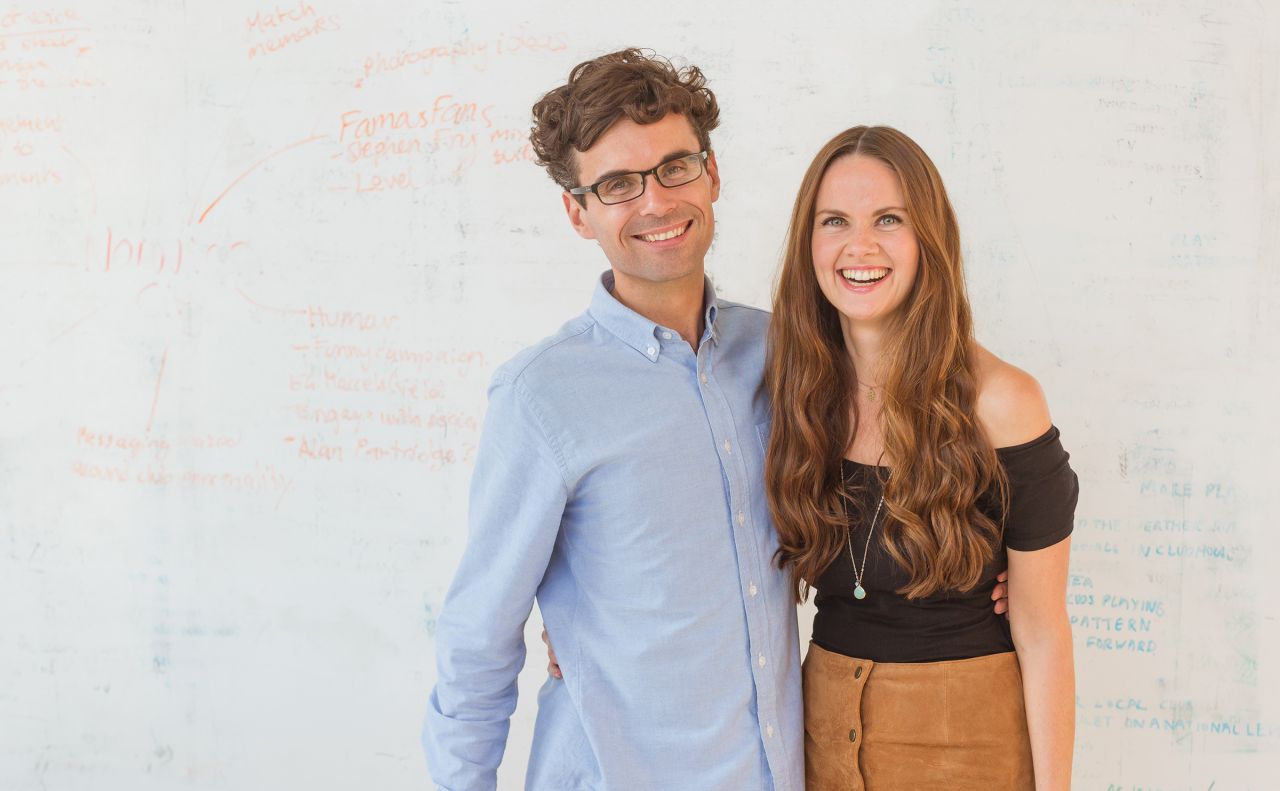
That's exactly what husband and wife team Rob and Ruth Watson have done with their design and digital studio Raw. Until recently, the Manchester-based pair had expanded to a team of 10, won a stack load of awards and worked for some of the world's biggest brands.
We spoke to the duo to find out why they decided to take the brave leap to transform their 10-year old business, and discover the secrets behind their new-found happiness and success.
Tell us about how you both got started. Where did you study? Where did you first work?
Rob: I always loved drawing as a kid so it felt natural to see where that would take me, after going to art college I studied Graphic Design at the University of Salford and graduated back in 2004. I then got a junior designer role at Splinter in Liverpool and spent two years there learning my craft on numerous design and digital campaigns.
Ruth: I loved to write and be creative growing up as you could never give a wrong answer – there were a million responses to one question and you could bring your own unique view to people. My passion for writing took me to the University of Salford where I studied English Literature and Journalism back in 2003. After finishing my degree I think I felt like a lot of graduates – slightly adrift with a qualification that could take me in a variety of different directions. After some placements in PR and writing for my student newspaper and radio, I felt drawn to the more feature writing side of journalism.
I also knew I wanted to do something that would give me a sense of connection and had an element of service to others so I took a side road off into working with primary school children and young people with special educational needs before beginning my copywriting journey with Raw and other clients in 2009. As soon as I entered the design world and began working on briefs, I knew I was on the right path.
When and where did you meet?
Ruth: We actually had been to the same high school, six years apart, so had walked the same corridors without knowing each other which is funny to look back on now. I met Rob the summer before I was due to start uni and he happened to also be at the University of Salford going into his final year studying Graphic Design.
We’ve been pretty inseparable since that summer of 2003 and we were a pretty good team at uni which may have been an early indicator of what was to come. Rob would help me layout my articles perfectly and I would end up in all sorts of weird photo shoots for his projects. I think I was a corpse for one campaign with an ID tag hooked round my toe, all for an alcohol awareness brief!
So it’s been 10 years since you launched Raw. Why did you decide to launch your own design studio?
Rob: I’m 36 now, we set Raw up when I was 26. I’d only been in the industry for two years as a junior designer but thought – what the hell, I can do this, this is something that excites me and I’ve envisaged this since I was at college. Ste Taylor (fellow Raw co-founder) and myself didn't have a plan back then and we just made it up as we went along.
How do you find working together as husband and wife? How do you make it work?
Ruth: It can be the best of times and the worst of times, I hope that isn’t too brutally honest to publish. I’m sure any couples or close friends who are in business together can relate to the back and forth you both go through. As a couple, you can really be vulnerable and honest about things, which helps with the creative process and gives you the confidence to move forward towards your goals as you both push each other to be your best. Ultimately, when you’ve known someone for 13 years, it’s easy to get in the flow and tune in to each other’s needs which is a wonderful feeling.
On the flip side, work can be all consuming and your personal relationship can suffer. We have been through times when work issues and challenges have left our personal life less than perfect. We’ve learned the hard way that it’s so important to set boundaries and never let what happens at work take over the love and deep connection we all need to have with our life partner. Simple things like setting dedicated time for us to spend together when work is off-limits and keeping our weekends and a couple of evenings free just for us is a big help. We started dance lessons this year which has been great – you can’t talk about the studio when you’re working on your tango steps!
Rob:, In the beginning, we started out slowly, Ruth would freelance for Raw a couple of days a week. This certainly helped the process as if we had gone all in from the start it may have been too much of a shock living and working together. We are on the same page when it comes to how we approach work, we are very in tune with each other so this helps the creative process. We've certainly found it tricky over the years and it's felt at times like Raw was taking over all areas of our life. This is one of the reasons why we decided to change how we ran the studio so we had a much better work/life balance.
Any notable projects over the years that you’re especially proud of?
Rob: I'd probably say our work with the BBC Philharmonic. I remember us going into pitch our ideas to them against some pretty big agencies at the time. We won them over with our approach and idea to collaborate with Andrew Brooks. This then began a five-year relationship, including two years teaming up with Helen Musselwhite. It's always been the collaborative projects I've enjoyed the most as you can craft original pieces of work when working with other artists.
Ruth: I love going back and thinking about how proud I am of certain projects – I think we could all do more of it. My highlights always come from the moment I have a spark of an idea and then the process of working as a team to develop and play with what’s possible. Back in 2012, we worked on our first app with Nando’s, which was an ambitious interactive festive app that allowed two users to split a cracker using their devices and then access a range of content and games.
Another festive project which followed a year later was our self-initiated Let’s Talk Turkey campaign. (I turned veggie in the year between these projects, hence the change from eating birds to keeping them alive!) This was an absolute passion project for me and combined great design, copywriting and service to others – in this case raising awareness of the factory farmed turkey’s plight. We had Hugh Fearnley Whittingstall’s River Cottage tweeting about our campaign and a full feature on Creative Review, with hundreds of people pledging to choose a more ethical option for their Christmas dinner.
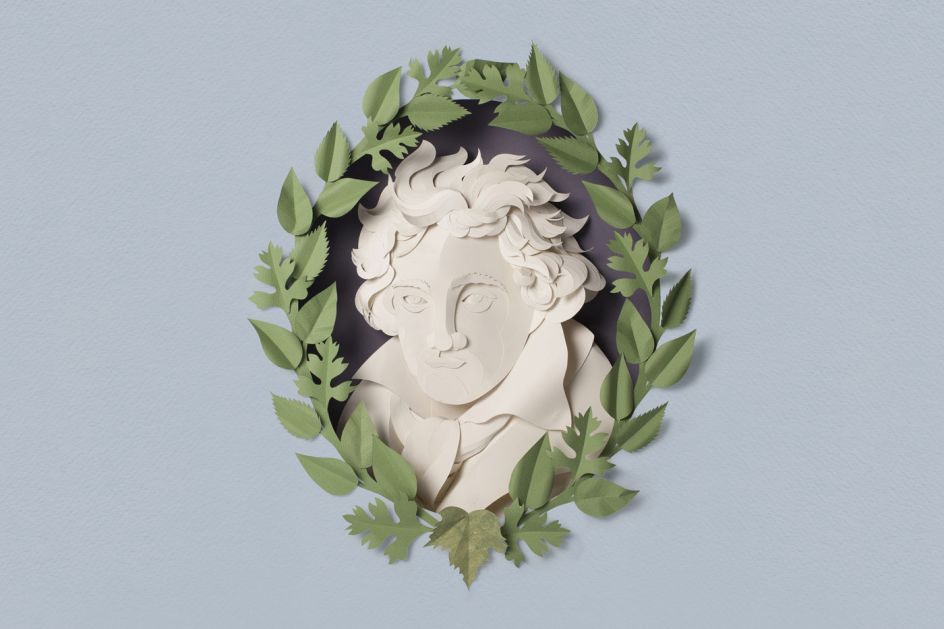
BBC Philharmonic
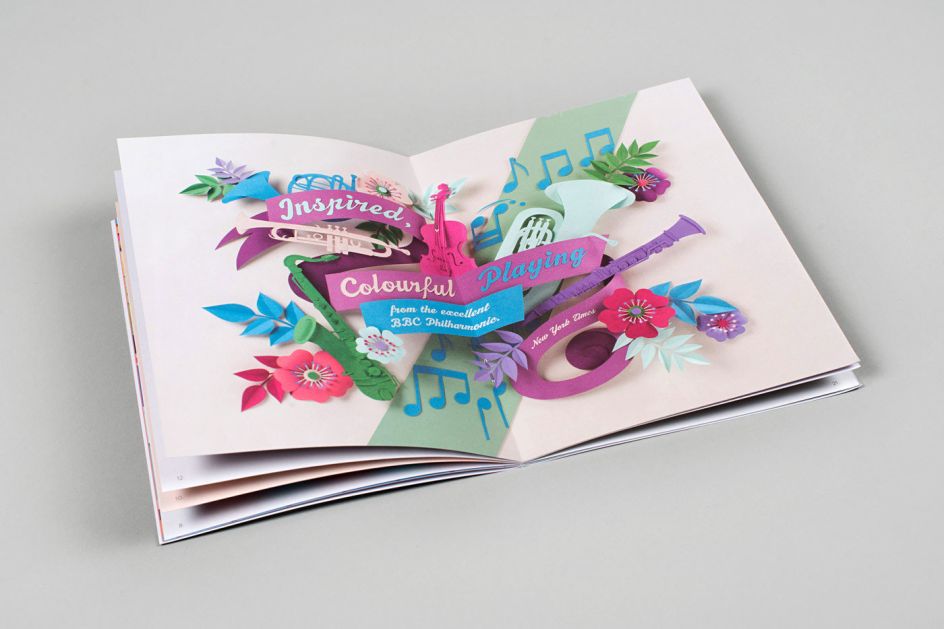
BBC Philharmonic
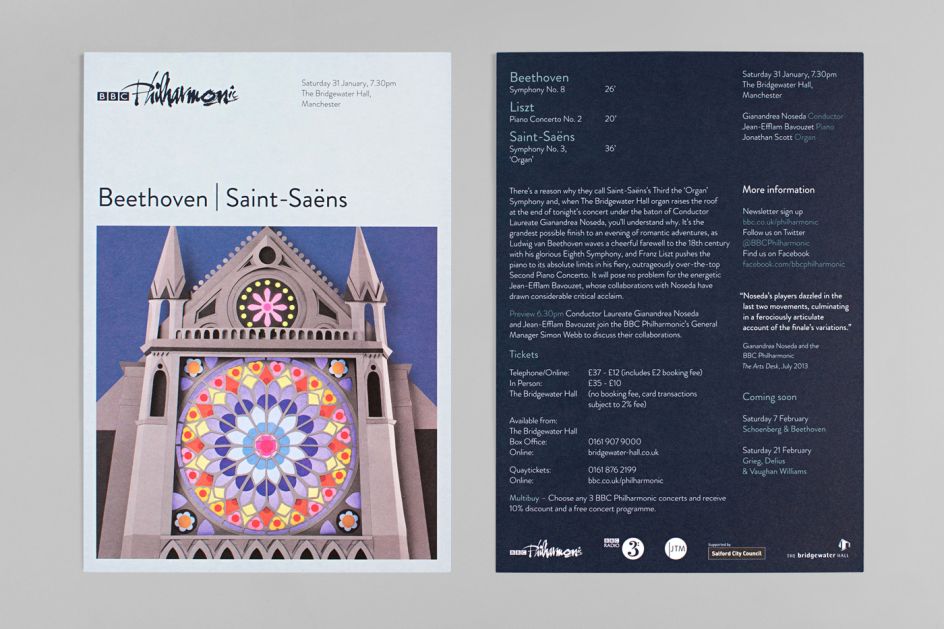
BBC Philharmonic
You’ve always had the motto: “do good work for nice people”. Have you been able to work with nice people?
Rob: Yes, for sure. We've worked with some really good people during our time and continue to do so today. When the company was a few years old we decided to look a lot more closely at what sort of agency we wanted to be and how we wanted to express ourselves and developed a series of eight values. Then a few years back “do good work for nice people” was coming more and more to mind, and we decided to do away with the rest of the values and simplify it down to this one. And the idea of nice people goes much deeper too in terms of what sort of company it is and whether they are having a positive impact on their people and surroundings.
Ever had to ditch a client?
Ruth: I don’t think we’ve ever officially ditched any clients but we’ve definitely made some calls when certain opportunities and clients felt like they didn't fit with our personal ethical values. We had an opportunity to work with a large cereal brand but when we began to research the company, they had just been sued for lying about the ingredients and health benefits of their products, and their practices weren’t environmentally sound. We listened to our gut on this one as it just felt wrong to align ourselves with that and we walked away. These calls don’t always go down well with the wider team but you have to trust yourself, even when it’s an unpopular choice.
You’ve recently downsized your agency to just the two of you, and aren’t shy about it. What spurred this big change?
Ruth: I think we could write an essay on what spurred the change in the way we work as there were so many twists and turns before the decision was made – it definitely wasn’t a linear process. The reason, at the heart of it all, was that we knew we needed a big change to move forward. Even if it didn’t make sense on paper or to the wider world, we both knew – after about 12 months of exploring all the possible options for change – that we needed to let go of our permanent team and studio space, and work collaboratively with a wider team of freelancers.
The driver of the change in direction has definitely been a lifestyle one. We had an incredible, talented team and many of them were dear friends. However, we did experience issues with managing people which were very stressful. Like a lot of studios, the overheads and needs of a team means you can end up feeling like you’re ‘feeding the monster’ without feeling satisfied and proud of what you’re doing. Personally, I was filled with uncertainty and ‘what if’ scenarios about making the change but I knew it was the only way I could achieve a more balanced, happy life. From a spiritual aspect, it was very much love overcoming fear.
Rob: Over the course of nine years we built up to a team of 10 staff and won a bunch of awards and made some pretty nice work along the way. But here’s the thing – in all that time I wasn’t really happy doing it. I didn’t like the idea of working a 9-5, managing staff and being stuck in the same location.
We needed to spread our wings and move away from Salford (I'd spent 13 years there, including university), so since the turn of this year we took a 180 degree turn around and decided to do things a different way and design the life we wanted, rather than follow a template for life that had already been set out for us. We now work from home in our loft studio (saving 30 hours a month in travel time), are able to be more choosy on which projects we work on and get to collaborate with some amazing people!
There seems to be quite a few people opting for a better work/life balance – do you think the days of burnout are over?
Rob: In my case, I learnt the hard way, I had to burn out first to realise this way of working wasn't right for me. I went down the traditional path of going to university, getting a decent job and then setting up a company with the aim of growing it. This idea of 'success' was beginning to wear thin on me, as I wasn't feeling fulfilled with the way I was approaching things. And the thing is you don't have to change everything, you can keep the main core of what you are doing, it's just a process of letting go of the things that no longer serve you and getting the balance right.
What does your new business model look like?
Ruth: In lots of ways the projects we work on and our fundamental approach are the same, but we now work solely with collaborators and freelance creatives, finding the best team to fit each individual project and client. Collaboration was always a huge part of our projects even when we had a full-time team, and this new approach has seen us add to the 200 individuals we’d already teamed up with over the years.
The main difference is we now mainly work from our new loft studio at home which allows us the flexibility to be in one place or pick up our laptops and travel to new places, which we’ve been doing lots more of this year. When working with a wider team, we often meet up at the start of a project and then stay connected throughout the process using great tools like Slack and Skype to keep up good communication throughout.
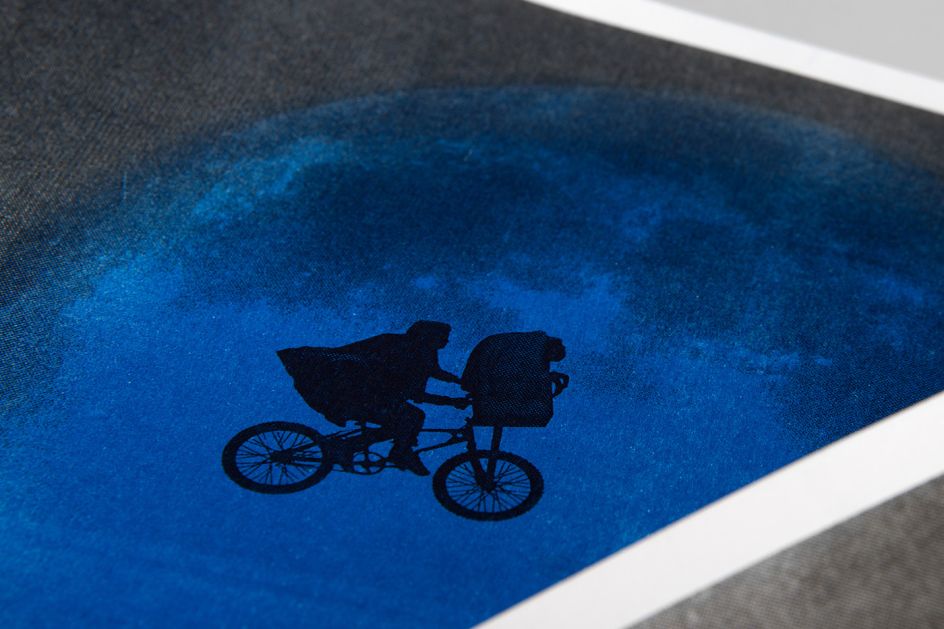
HOME, Manchester
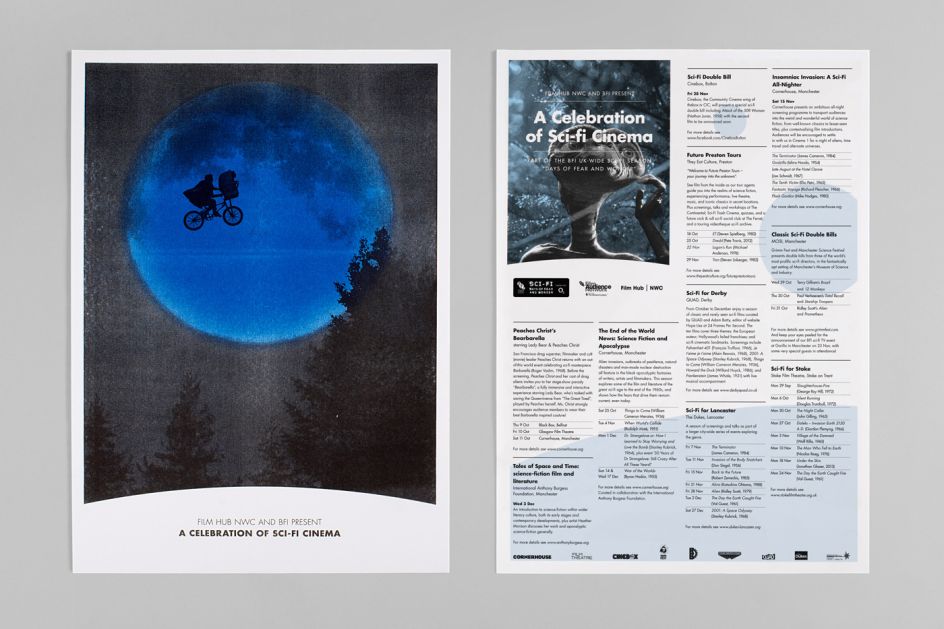
HOME, Manchester
Do you think the agency model is suffering in the design industry?
Rob: I feel so, yes. The world is changing faster then ever right now – what was relevant a few years ago is gone by the wayside and with the advancements in technology, it's meaning the old structures are no longer needed. The structure of the traditional agency with full-time staff and offices working a 9-5 is on its way out. Instead, I feel we'll be focusing on the talents of individuals, and the core way of working will be based on cooperation rather than competition.
Change is a scary thing. Especially in the creative industries where success is still attached to size and turnover. Was it difficult letting go of what you’d built?
Ruth: It certainly was, and it can be especially challenging when outsiders looking in believe it's so perfect! There were three main aspects that challenged us: leaving our studio at Islington Mill, letting clients know we were changing, and the hardest of all, saying goodbye to the team. I had all kinds of worst case scenarios whirling through my head as we began to put the changes in place but, like most things, many of these didn’t happen.
It was actually a relief and pleasure to hand over the Engine House to the guys that have now taken up residence there, our clients were actually happy for us and excited about this new way of working, and we’ve stayed on good terms with most of our team which was important to us.
How are you finding your new lifestyle?
Rob: Making the shift has been challenging that is for sure – it wasn't an easy process saying goodbye to our old way of working and the relationships we left behind. Reflecting back on it now nearly a year in, honestly, it's turning out to be one of the best decision we've made.
The freedom it's given us to work how and when we want, and to travel more means we are now feeling more fulfilled with the path we are on. Sometimes in life, we just have to take that leap into the unknown, follow your excitement and trust it will all work out for you. For us, so far, so good...
Ruth: It’s a strange feeling as I can’t take myself back to how working life used to be – it seems like another lifetime. Managing anxiety has always been a challenge for me and now I have so much space to breathe and enjoy my work and my life. This year has been massively transformational. My confidence and belief in myself have grown and made the shift has shown me that I can do hard things.
And the more comfortable I can be with change, the better my life will be. It’s not all sunshine and rainbows, and there are days when I really miss being in the studio with the team – the social side is the biggest adjustment for me.
What has been the reaction from clients?
Rob: From the off we were sure to communicate the adjustment clearly and honestly with them, and they have been really supportive about the changes, some of them have even said they admired our bravery which was really nice to hear. As long as our clients are receiving quality work and everything goes to plan then how and where we work doesn't enter the equation.
Now you’ve got a bit more time, you’re focusing on more passion projects – can you tell us more?
Ruth: We began a new self-initiated, product-based arm of Raw a few years back called Make Work Play, but as other studios will know, client work often makes it super challenging to get your own products off the ground. The last 12 months has really given us the opportunity to prioritise Make Work Play and focus on specific products that we’ve been working on in the background for a while.
I have just published my first children’s picture book, Len Legsworth through Make Work Play, which has been an awesome journey. I teamed up with the amazing illustrator and Creative Pep Talk creator, Andy J. Miller, on the book and we’ve both been working on it alongside our other projects for the last year. The story follows Len, an average spider, through the seasons up to Christmas, his favourite time of year. After taking a nap in the decorations box, he ends up trapped and left up in the attic with no way out. A special act of kindness later and a little fairy magic, Len realises how precious his freedom is and how friendship can be found in the most unexpected places.
It’s a story I’ve had hidden away for a few years and I really wanted to go through the whole process of self-publishing and collaborating with an illustrator to make my dream into a physical book. I speak to lots of people who have ideas and stories stored away in their notebooks and find it hard to step out and get started. I felt exactly the same and it’s only through lots of research, help from mentors, and support that I’ve been able to hold this book in my hands. I hope that other people might see my story and be empowered to make their ideas a reality.
Rob: After working on over 1,000 projects for practically every target audience, we felt it was high time we applied that experience to develop some of our own products. We've always enjoyed the children's projects the most over the years, as it's allowed us to tap into our inner child and be more playful with our approach. We also feel really strongly about educating the next generation so our aim is to launch new ventures with this in mind.
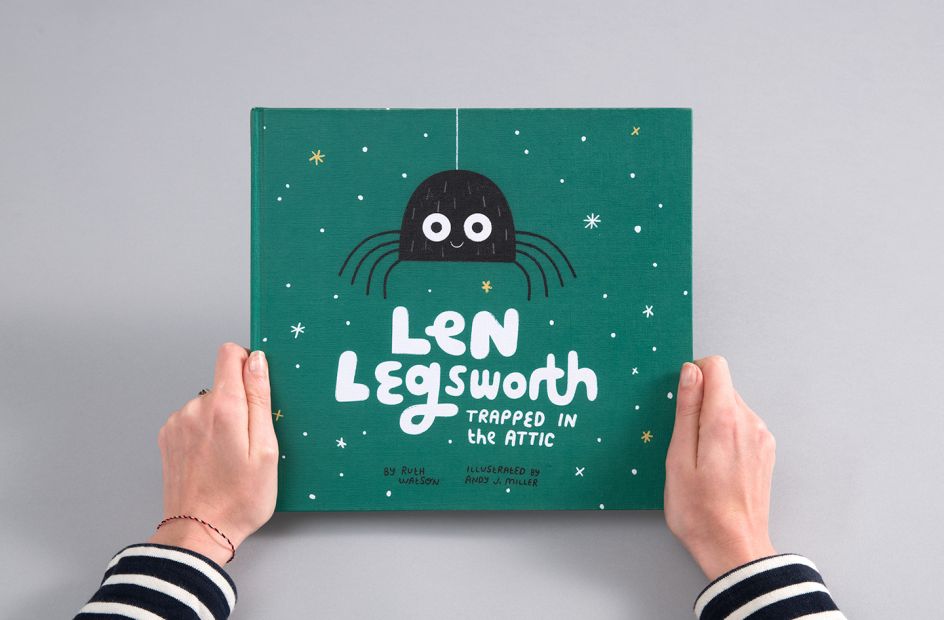
Len Legsworth
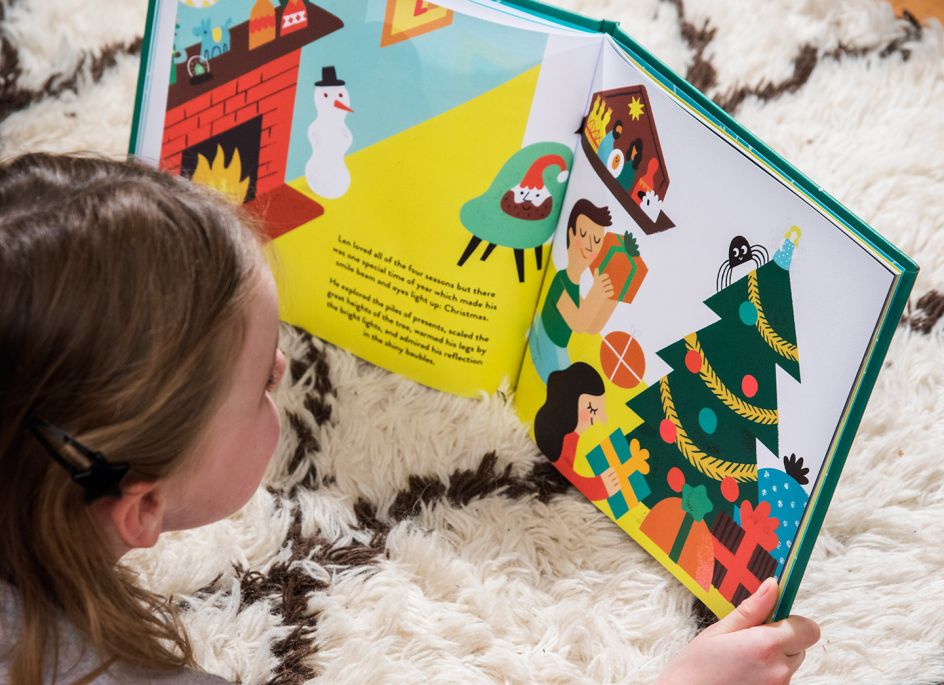
Len Legsworth
Are you up for collaborating with other illustrators to create books in future?
Ruth: Yes! All the illustrators we’ve worked with are so dedicated and excited about what they do, it’s a great experience to be part of that and Andy who illustrated Len Legsworth has been a blast to work with. Just thinking about what other collaborations could lie ahead is what makes the product side of things so exciting.
We love “Bruce” on your website. The wise bear. How did he come about?
Rob: A few years back when we took over the ground floor space of the Engine House I had the idea of getting a big wooden bear in the space. I wasn't sure it would manifest, to be honest, but then we visited Tatton Park Flower Show and there was a guy doing chainsaw carved animals. We commissioned him to create a 6ft wooden bear to be our company mascot, giving anyone visiting the space a nice 'roar' welcome. So when we created our new website we thought it would be a nice addition and add some personality to it by allowing Bruce to share his ‘paws for thought’. The wooden version now resides in our garden, back in his natural habitat.
You've set him free. Bless. So what's your favourite bit of wisdom from Bruce and why?
Rob: I would say 'Your time is limited, so don’t waste it living someone else’s life'. This fits in nicely with us designing the life we want, not following a template that had already been set out before us.
Ruth: For me, it has to be 'Kindness doesn’t cost a damn thing. Sprinkle that s**t everywhere'. Because that’s probably the greatest gift we can all give to ourselves and to everyone that crosses our path. And it’s the simplest to get started on.
Bruce, your company motto and this new way of running a business – they paint a picture of you both. Would you say you are always working on yourselves too?
Ruth: Working on myself is the hardest task of all, but it’s definitely the one with the biggest rewards. I’m currently training to be a yoga teacher and I’ve had a regular meditation practice for four years. In the subtlest of ways meditating reminded me of who I really am, underneath the layers of who I’m supposed to be, to feel liked and accepted.
With no intention or goal, I felt myself becoming a little kinder and a little braver. I naturally changed the way I treated other people, animals and myself which sounds pretty weird to most people but that was just how it turned out for me. I think the great yogi BKS Iyengar said ‘Don’t get on the mat and expect your life not to change'. The more I look within, the more I find I have to simplify on the outside. It’s the work I think we’re all here to do.
Rob: We had another motto and that is 'Make Things Better'. This is what life is all about for me, so anything I can do to make my life better then I'm up for exploring it. I've been looking beyond design for quite a few years now and have taken a keen interest in health and nutrition, as well as taking the time to feed my mind by travelling the world to new and exciting locations.
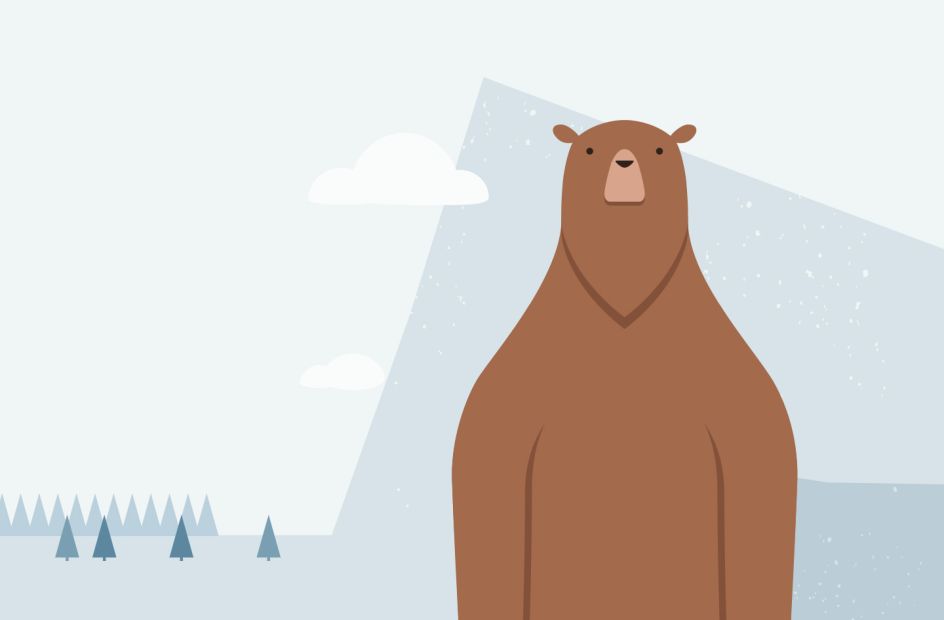
Bruce the Bear
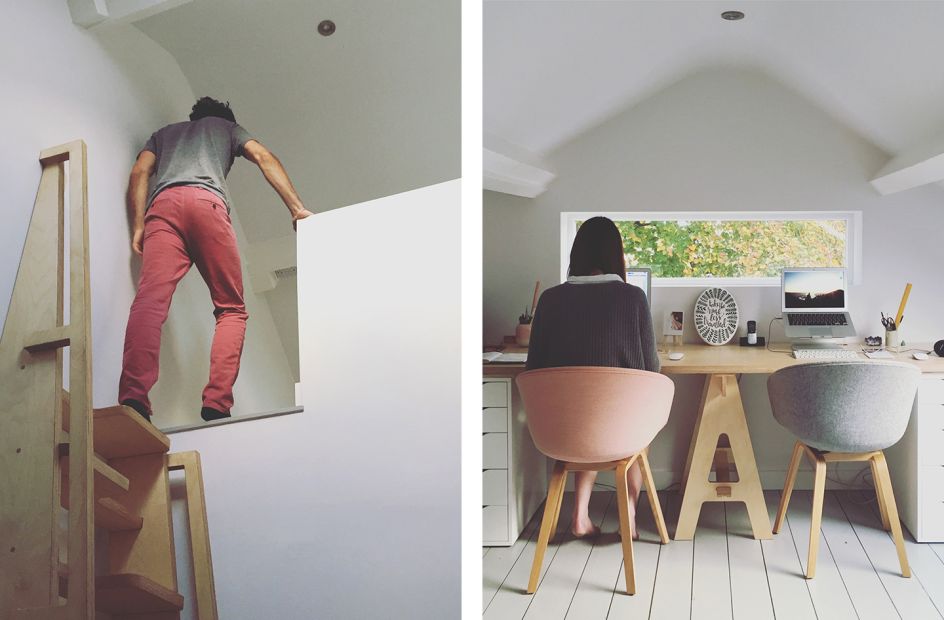
Ruth and Rob's new home loft space
With lots of kindness and wisdom, what advice would you give to others out there who are in a similar boat – struggling to decide if running an agency with lots of staff is for them?
Rob: A big thing to overcome is the perception that society puts on having a company with lots of staff - it's seen as a good thing growing a company. But why is that? If it's just getting bigger for the sake of it then what's the point? Is it just an ego thing? Quite possibly as it's seen as a sign of being 'successful' by those around you.
When we told those closest to us that we were letting all our staff go, along with our studio, and going back to basics, they all thought we were crazy and something must be going wrong. But I knew inside that we were doing the right thing for us, and that's so important – acting on what is right for you, no matter what anyone else thinks.
Ruth: Firstly, write down all your options for how to run your business – every way you can think up. Then also jot down all your personal dreams and visions for the future. Secondly, see how each option for your business model can support that wider vision you have for your life and find the best fit. Finally, and perhaps recklessly, do what we did and and ignore what you’ve found to be good on paper and listen to your heart. Tune in to your intuition – it’s quieter than the mind but I’ve found it be a whole lot wiser.
Any tools or resources you can recommend for becoming lean and mean?
Ruth: Marie Forleo is the ultimate lean and mean entrepreneur, who has amazing advice and interviews for anyone looking to make their business model more flexible and increase both productivity and creativity. Her thinking has helped me massively this year and her weekly emails and videos are a must-see for me.
Rob: Tim Ferriss's book The 4-hour Work Week is an absolute game changer when it comes to redesigning your business to create the lifestyle you want. It's full of tips and tools and played a key role in helping to change my mindset ahead of our own changes.
It’s often difficult finding the right network and collaborators. How do you discover people you can rely on and who deliver great work?
Ruth: Years of collective experience between Rob and I have been key to finding the right network. We have hundreds of amazing connections from a decade of Raw and this has been invaluable to our new model of working. We have been able to continue working with some of our previous team and we’ve complemented this with some wonderful freelancers who have either been highly recommended or people we’ve collaborated with in the past.
Social media also is hugely helpful and Twitter has been a great tool for finding new collaborators. I think you do have to flex your discernment skills and your intuition when it comes to social media and sales emails though, do your homework and start off with small briefs before you jump into a large project with someone new.
Now that you’re agile and work with freelancers and collaborators, how do you make it all come together successfully?
Rob: This intuitive way of working is much more up our street and it gives us the flexibility to expand our team for periods of time on bigger projects, and then in quieter times it can be just Ruth and myself teaming up. Between the two of us, we have a strong skill set so this gives us a great foundation to work from and with tools like Slack and Skype we are only a moment away from connecting with our remote team. And by using file hosting service Dropbox it allows us to share and sync documents easily with our team of freelancers.
"Ignore what you’ve found to be good on paper and listen to your heart. Tune in to your intuition – it’s quieter than the mind but I’ve found it to be a whole lot wiser."
In your 10 years in business, what three things have you discovered about yourselves the most? For better and worse?
Ruth: Change is scary, but feeling stuck is even scarier. It’s not always easy to be a woman in a male-dominated industry. Seek out talented women and work together to design an industry that tells female stories and embraces the feminine qualities in both men and women.
I’m a sensitive, empathic person who is as far from the female in business stereotype as you can get. But these are the qualities I value the most and the ones I think have helped me the most in creating my best work.
Rob: The only limits are the ones I put on myself. I can be stubborn as hell when it comes to seeing through an idea. And no matter how the situation looks, I can always find a good outcome.
And would you change anything if you could go back?
Ruth: No, I would just remind myself that everything passes and changes so don’t get too attached to the good or the bad.
Rob: I'd like to say we should have been braver to make the changes sooner, but then again I wouldn't have learnt everything I needed too, so I trust the timing of it all.
Finally, what does 2017 look like to you? Any other plans for personal growth, travel, fun and adventure?
Ruth: I’m really just following my excitement at the moment, and seeing where that takes me. I’d like to see Raw continue to evolve and grow, nurture new product ideas and launches through Make Work Play, and enjoy my yoga teacher training journey. Adventure wise, kayaking with orca whales is on my 2017 wish list – we swam with humpback whales at the start of this year and I’ve never felt more alive and peaceful. The ocean is calling me.
Rob: We have another product launch in the works for Make Work Play all around encouraging kids to use their imagination by dreaming up their own stories and journeys with their favourite creatures before bedtime.
To travel and work in different locations for a few months on end will be the next big step for us, now we've put in place this new way of working. I'm also exploring different ways of living and have been seeking out like-minded individuals who are open to living within a sustainable community with a greater connection with one another and our surroundings. With this in mind I am currently undertaking a permaculture course to help seed this idea further and am in the process of exploring locations for the community. So who knows where we'll be in a few years time!
To find out more about Rob and Ruth and their design and digital studio Raw, visit www.weareraw.co.uk. Or you can follow the pair on Twitter @WeAreRaw. To grab a copy of Len Legsworth, visit lenlegsworth.com.






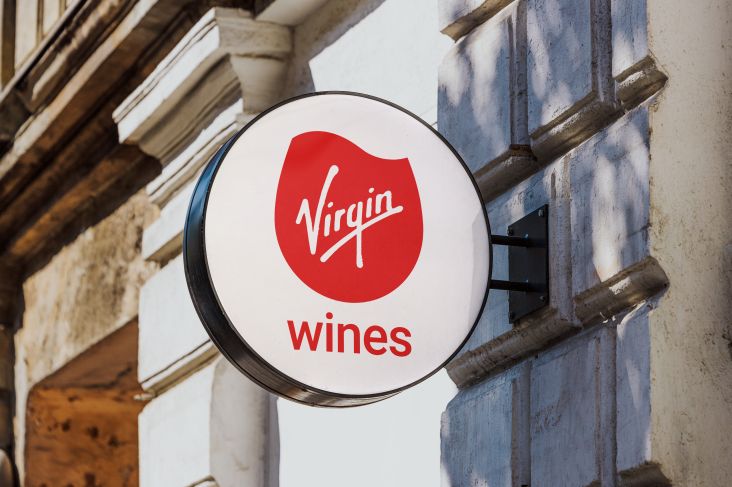

](https://www.creativeboom.com/upload/articles/86/862919952c0ad18439004228895a431dc6e45ffc_732.jpg)
